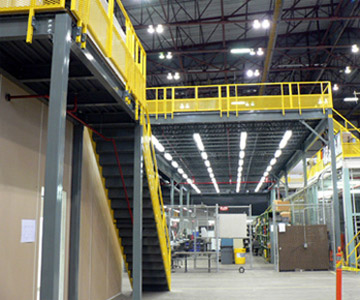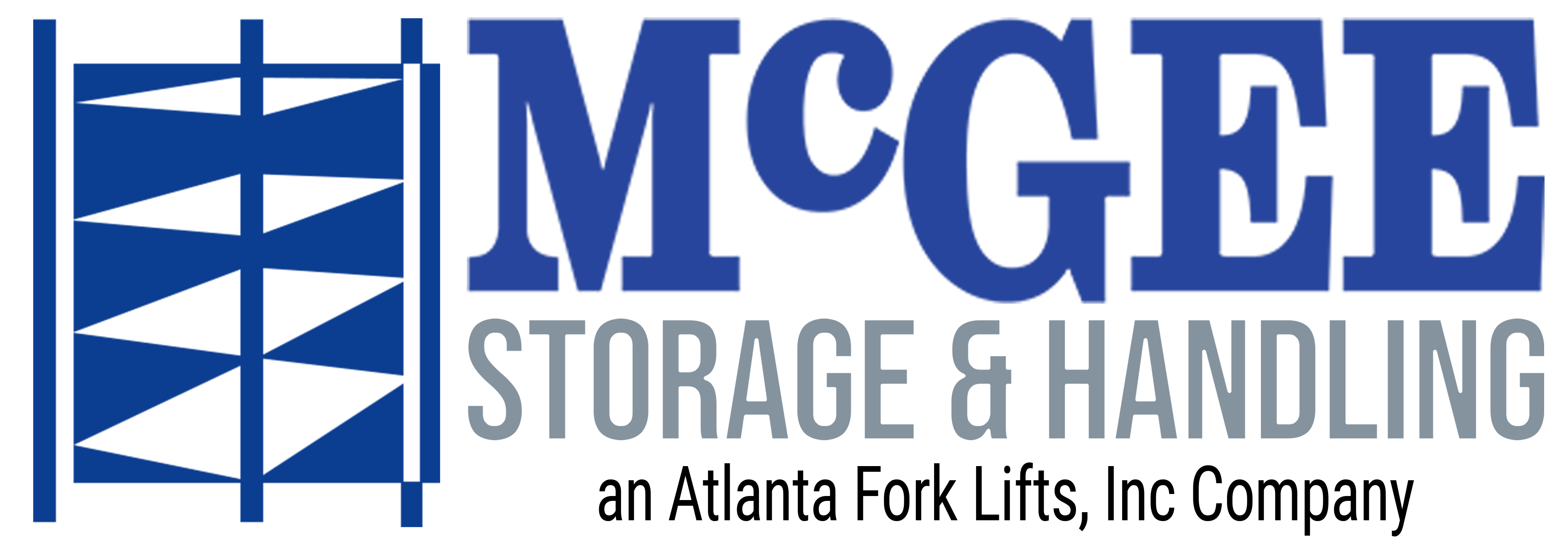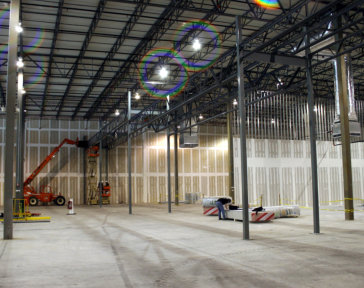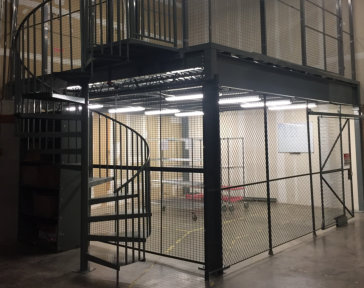Free-Standing Mezzanines allow you to take advantage of unused, available overhead (cubic) space to expand your operations upward and avoid a costly building expansion or relocation.
Mezzanines are used for a variety of applications, including:

Mezzanine – 20’ clear
Benefits of Mezzanines
The benefits of adding a mezzanine are substantial:
Maximizes utilization of all available cubic space allowing you to expand up instead of out.
- Maximizes utilization of all available cubic space allowing you to expand up instead of out.
- Leverages your current investment in heated (ventilated) square footage.
- Keeps production moving or expanding on the main level, relocating less-needed product or less-productive activities out of the way.
- Fends off costly building expansions or the need to relocate to a larger or added facility.
- Provides tax advantages since they can be dismantled and moved (bolted style) and are thus considered a non-permanent structure.
- Mezzanines are scalable in size and level. Most often, one level is constructed above the main floor, but multiple levels can be engineered and installed, depending on the desired use and the height of the building.
Construction materials vary as the design dictates. Options for mezzanine decking materials range from plywood to engineered wood decking and concrete. A metal sub-decking is installed prior to the deck materials being either attached or poured. For heavyweight requirements or “clean” environments, bar grating or steel plating are recommended.
The under structure may also differ in structural components. The structure is engineered based upon how the mezzanine will be used and the available spacing between columns below. The most highly recommended is a combination of structural framing and bar joists, for when larger spans are needed between columns. Roll-formed steel components provide an economical option if spacing of columns can be limited
Getting people on and off the mezzanine surface is typically accomplished with IBC (International Building Code) staircase(s). An IBC staircase is best suited when an occupant load is fewer than 50 people. The staircase must be at least 36-inches wide, and the addition of an intermediate landing is required when the mezzanine deck height is higher than 12-feet tall. The landing is designed to the width of the stairway and extends at least three feet in length.
For the safety of your employees, the addition of either a handrail (42” tall standard – two-rail) or MezzaRail, which combines handrail and wire partitioning, is recommended.
Product movement onto and off the mezzanine can be as simple as a gate that opens to accept a pallet raised by a forklift. A basic safety gate commonly called “tilt gates” or “pivot gates,” is implemented to separate product from people, and people from the edge of the mezzanine. To lift caseloads (totes and boxes) to the mezzanine deck and back down to the floor level – a belted, incline/decline conveyor may be utilized (straight or spiral). For full pallets, carts, or bulk materials, a vertical reciprocating conveyor – more commonly referred to as a material lift - works like an elevator to raise and lower product from floor to deck surface.
While this may seem like a significant undertaking, mezzanines are engineered to meet your exact requirements and are relatively quick to implement.











